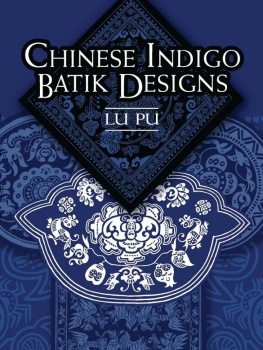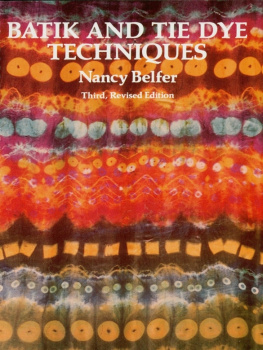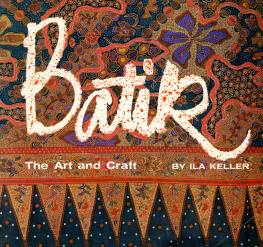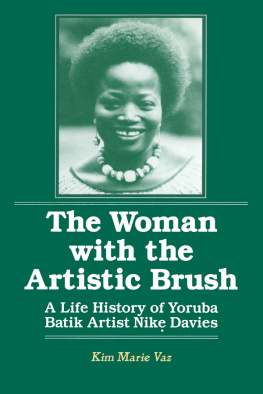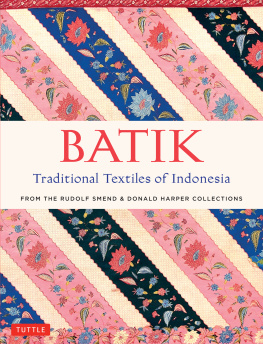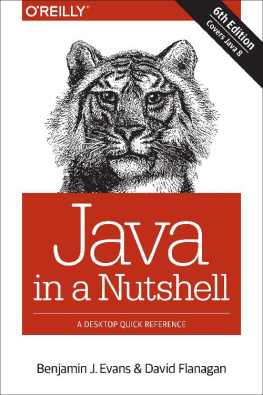ACKNOWLEDGMENTS
The rewards of this work have been enormous. I have been particularly gratified by the willingness of so many people and institutions to open their minds and their doors and to share their knowledge. My thanks to the following people is boundless. I wish I had the space to write in detail how helpful and kind everyone has been on this project.
In Amsterdam: Rita Bolland, curator of textiles at the Koninklijk Instituut voor de Tropen; K. Goulooze of Gre Nabrink; Andreas and Yook Landshoff; Rob Nieuwenhuys; and Benjamin J. Stein. In Auckland: Lau Wai Man. In Brussels: Mr. and Mrs. Fritz J. Schmidt. In Cirebon: Mr. and Mrs. H. Masina. In Cologne: Brigitte Majlis of the Cologne Museum; Rudolph Smend of Smend Gallery. In Delft: Suwondo Sudewo and Rita Wassing-Visser, curator of the Delft Volkenkundig Museum "Nusantara." In Enschede: Bernard van Heek. In The Hague: Meur. M. E. van Opstall of the Royal Archives. In Honolulu: Garrett and Bronwen Solyom. In Ithaca: Professor George Kahin.
In Jakarta: Asmara Arifin; Joop Ave; H. Munir Djody; H. Sa'adiah Djody; Wieneke de Groot; Atmadjaja Hayadi; Ambassador and Mrs. John Holdridge; Adrian Idris; Frank and Cheng Lammers; Soelaeman Pringgodigdo; Thomas Spooner; Drs. Suhardina of the Museum Nasional; Bam-bang Sumadio, director of the Museum Nasional; and Dra. Kartiwa Suwatia also of the Museum Nasional; Mohd. Amir Sutaarga, director of the Indonesia museums; Johnny and Gwat Widjaja; Toky Wan.
In Kedungwuni: Mrs. Oey Soe Tjoen; Mr. and Mrs. Muljadi Widjaya. In Krefeld-Linn: Marianne Frings; Dr. Carl-Wolfgang Schumann of the Textile Museum. In Leiden: Dr. Jan B. Ave, curator at the Rijksmuseum voor Volkenkunde; Dorothee Burr and L. Manputty-Tentua at the Koninklijk Instituut voor Taal-Land-en Volkenkunde; Winnifred de Groot; Rens Loedin. In London: Dr. Brian Durrans at the Museum of Mankind; Henry Ginsburg; John Hillelson; Lisbet Holmes. In Longboat Key: Julian and Goh die Kossow. In Los Angeles: Gordon and Judi Davidson; Mary Kahlenberg; Dr. Anne Summerfield. In Melbourne: Mary Drost; Joan Grant; John Guy, curator of Asian Art at the National Gallery in Victoria; Christopher and Veronica Hazzard.
In Milan: Sergio Feldbauer; Francesca Testa. In Montreal: Jacques Gadbois. In New York: David and Lova Abrahamsen; Richard Arkway; Morag Benepe; Barbara Butt; Millia Davenport; Katherine Duncan; Nancy Elliott; Cornelia Foss; Suzanne Goldstein; John Guare; Titi Halley; Helen Jessup; Mrs. Seti-Arti Kailola; Robert Katz; the Honorable C.J.M. Kramers, Consul General of the Netherlands; the Honorable Rudy Lengkong, Indonesian Consul General; Fanny Littell; Judith Lowry of Argosy; Robert Oxnam of the Asia Society; Alain Morvan; Shannon Mulligan; Elise Nelson; John Rathe and Daniel Tierney of the Rare Book Room and Tobin Sparling of the Print Room at the New York Public Library; Gail Perry; Dr. D. J. Reis; Frieda Rosenthal; Sandra Ruch and Herbert Schmertz of Mobil Corporation; Helen Schwartz; Anita Spertus; Lisa Taylor, director of the Cooper-Hewitt Museum; Alan Wardwell.
In Pekalongan: Fan Kei San; Fan Lie Ching; Jane Hendromartono; Tan It Long; Achmad Said; Mr. and Mrs. H. Achmad Yahya. In Ronco: Hans W. Siegel. In Rotterdam: Harmen C. Veldhuisen; Alit Veldhuisen-Djajasoebrata, curator Indonesian department, Museum voor Land-en Volkenkunde. In Singapore: B. Basharahil. In Surakarta: Danar Hadi; K.R.T. Hardjonagoro; Nora Yap. In Stonington: Judith Backman; Ann Fuller; Rosalie Mc Kenna; Eleanor Perenyi; Jon Rosenthal; Grace Stone. In Sydney: Lisa Purser. In Tokyo: Akiko and Bernard Krisher; Hiro Oka; Takashi Shiraishi; Meredith Weatherby. In Washington, D.C: Patricia Fiske, director of the Textile Museum; Cornelia Noland; Annette Valeo; Pandqi Surya; His Excellency A. Hasnan Habib, Ambassador from Indonesia.
In Yogyakarta: Mr. and Mrs. Ardiyanto Pranata; Dr. Djoko Soekiman, director of Sonobudoyo Museum; Johnny Sunu; Achmad Yusuf, head of collections, Sonobudoyo Museum.
Very special thanks go to Carol Southern of Clarkson Potter, who believed in Batik when no one else did, and to Gael Dillon, the art director, for her sensitive work with Kiyoshi Kanai, a brilliant graphic designer. Kathy Powell ably assisted on all aspects of the manuscript.
It was at the home of Brian Brake that I saw the first antique batik and it is thanks to him that much of this visual opulence is possible.
Robert J. Holmgren generously shared his enthusiasm for textiles and without him I would never have looked as far afield; his criticism of my manuscript was invaluable.
The manuscript was also read by Jagat S. Mehta, former permanent foreign secretary of India, who provided scholarly insight into the roots of Hinduism, the Javanese language, and Asian nationalism.
Paramita Abdurachman and Iwan Tirta helped in the research and writing. Their points of view were always important and lively.
Mattiebelle Gittinger, curator of Textiles at the Textile Museum in Washington, D.C, first suggested the idea of an exhibit of batik from the north coast and then urged me to organize and write this book. Her scholarship, research, and friendship were essential.
My colleague Susan Schwartz Blum has shared with me some of the best and worst moments in this endeavor. Her tireless research, enormous enthusiasm and energy, as well as modesty recommend her to enthronement. To my other colleagues at China Seas, especially Christina Diekman, go my thanks for keeping things going smoothly throughout.
My family has suffered with unsilent good humor, and despite the din and too many cold suppers, they were always a source of encouragement and kindness.
I did not know when I met Osborn Elliott in Hong Kong, nearly two decades ago, that my life would change and become inexorably linked with his. In retrospect it seems fitting that we have been together from the time we remet on a hot tarmac at Jakarta airport, he waving the Newsweek flag and I that of north-coast batik. This book is dedicated to Oz, the finest editor, friend, and lover.
I.M.E.
BIBLIOGRAPHY
Abdurachman, Paramita Rahayu, Pameran Batik Corak Cina (Batik Exhibition of Chinese Designs), Jakarta: Museum Tekstil, 1977.
_____, "Dermaya Batiks: A Surviving Art in an Ancient Trading Town," Spafa Digest 8, 1987.
_____, ed., Cerbon, Jakarta: Yayasan Mitra Budaya Indonesia, 1982. Excellent though brief history, of Cirebon.
Achjadi, Judi, ed., Batik: Spirit of Indonesia, Jakarta: Yayasan Batik Indonesia, 1999. Comprehensive study of traditions, motifs and their use in contemporary art, home, and fashion.
Acosta, Jose de, Histoire Naturael en Morael van de Westersche Indien, Amsterdam: B. Iansz voor I. E. Cloppenburgh, 1624. Translated by Linschoten ca. 1598. Originally published in Seville in 1598. De Acosta was a Jesuit priest.
Adam, Tassilo, "The Art of Batik in Java," Bulletin of the Needle and Bobbin Club, Vol. 18, Nos. 1-2, 1934, pp.. Dye techniques plus systemized discussion of motifs by a Dutch government enthnologist. Photographs included.
Adams, Dr. Monni J., "Symbolic Scenes in Javanese Batik," Textile Museum Journal, Vol. 3, No. 1,1970.
_____, Threads of Life: A Private Collection of Textiles from Indonesia and Sarawak, New York: Vogue Offset Company, 1981. Exhibition catalogue of textiles shown at the Katonah Gallery in 1981.
Adhyatman, Sumarah, Keramik Kuna Yang ditemukan di Indonesia (Antique Ceramics Found in Indonesia), The Ceramic Society of Indonesia, Jakarta: Jayakarta Agung Offset, 1981. Excellent discussion of Indonesian ceramics. Important to discussion of batik motifs.
Allen, Oliver E., The Pacific Navigators, Alexandria, Va.: Time-Life Books, 1980. Excellent brief history with superb illustrations, especially of fifteenth- and sixteenth-century explorers.


